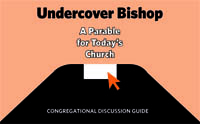 The Children’s Sermon As Catalyst
The Children’s Sermon As Catalyst
A pastor may think that a children’s sermon is a waste of time. The children might be better off somewhere else, engaged in age appropriate activities.
The children’s sermon time is so much more. It is a golden opportunity to introduce change to your congregation.
Many pastors do little more than talk at the children—a watered down “trailer” of the 20-minute version about to come.
It is painfully obvious in many cases that the pastor has little experience talking to children. All those years of seminary study so you can expound to five-year-olds!
The children’s sermon is a time when you can communicate to everyone. Many adult Christians have not been well-schooled in church matters. This is an opportunity to not only reach the children but to review basic church teachings without “talking down” to the adults.
You can experiment in the few minutes you spend with the children. Few will object. It is a chance to create the experience modern worship so desperately needs—something that people will remember and talk about when they go home and off to work.
In the business world, this is called creating a “remarkable” experience. Business people know that their best advertisers (evangelists) are customers (congregants). They aim to provide the best service possible so that the customer/congregant talks about his or her experience.
Most worship services are fairly predictable in format and even in content. They are no doubt meaningful to the congregants, but few are anything anyone will talk about during the week or even remember a few days later. (Quick! What hymns did you sing in church last week?)
More people will be tuned in for a ten-minute children’s lesson than for the full 20-minute version. Use this opportunity to create a “remarkable” experience.
This is a pastor’s opportunity to introduce change without objection. Congregants may not even notice that the praise song you taught the children last week is the sermon hymn this week.
The children’s sermon is an excellent opportunity to introduce media, teach the kids (and adults) to move in liturgical dance, practice a new prayer technique, read a story or poem, or perform a little drama. Don’t put a stopwatch on the activity. Some sermons may be five minutes long. But if people are engaged, milk the moment.
Here is a list of guidelines.
- Don’t treat the adults as passive bystanders. Engage them in music, question and answers, or other activities. Enlist their help. They will be more likely to step up to help the children then if you asked them to do something for their peers. Ask a choir member to lead or teach a new song, for example. Or have an usher explain what happens to the coins the children put into the offering plate. It will strengthen your congregation’s sense of community.
- Don’t be afraid of repetition. Kids love it. Adults learn from it, too.
- Don’t be afraid of interaction. Throw out a question to the adults. Better yet, have the children ask questions. Imagine one of your older members telling the story at work: “In church yesterday, a little girl asked me a question . . . .”
It’s all about story-telling. We all love to tell the story. The children’s sermon can be the vehicle for congregational story-telling. And this can lead to transformation.







